The EPA says burning wood to generate power is 'carbon-neutral.' Is that true?
Deriving fuel from trees costs more than wind and solar power and it emits more carbon than coal. There are many heated debates about this kind of energy, known as forest or woody biomass.
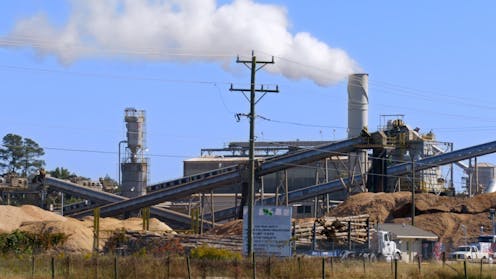
Environmental Protection Agency Administrator Scott Pruitt recently told a group of forestry executives and students that from now on the U.S. government would consider burning wood to generate electricity, commonly known as forest or woody biomass, to be “carbon neutral.”
The executives, who had gathered at an Earth Day celebration in Georgia, greeted the news with enthusiasm. But I did not.
Biomass does not introduce new carbon into the system, as its supporters point out. Yet it does transfer carbon from forests to the atmosphere, where it traps heat and contributes to climate change.
As a scientist and the coordinating lead author of the Intergovernmental Panel on Climate Change report on renewable energy, I have concluded from extensive scientific studies that converting forests into fuel is not carbon neutral. I have also been working with many other scientists to inform governments about the potential for forests to remove carbon dioxide from the atmosphere, and the climate perils of burning wood and forestry waste at an industrial scale for electric power.
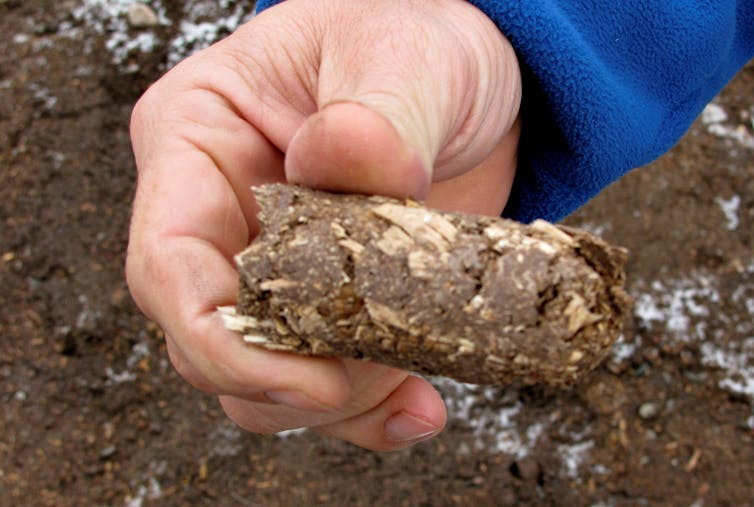
Turning forests into fuel
Energy can be renewable. Or sustainable. Or carbon neutral. Or some combination. These terms are often used interchangeably, but they mean quite different things. Wind power and solar energy clearly have all three attributes. What about bioenergy – the heat released from burning wood and other plants?
Trees can eventually grow to replace those that were felled to produce wood pellets that are burned to produce electricity. That makes biomass very slowly renewable, if the replacement trees actually do grow enough to absorb all the carbon dioxide previously discharged.
Environmentalists generally oppose forest biomass because it contributes to climate change while disrupting important ecosystems and the biodiversity they support. They also object to this source of energy because it appears that burning biomass releases pollutants that endanger public health.
The scientists who study climate change, the global carbon cycle and forest ecology tend to reject the notion of biomass carbon neutrality. Some forest economists and forestry scientists, however, support the notion of carbon neutrality, depending on the circumstances.
Carbon accounting
To settle this debate, many of my colleagues and I believe it is essential to accurately account for all the emissions from burning wood for electric power. This is more than an academic exercise as biomass already produces significant emissions and industry observers foresee a nearly seven-fold increase in its use by 2050 from 2013 levels.
Forests can, at least theoretically, be managed sustainably as long as annual harvesting doesn’t exceed annual growth rates. Suppliers claim to use residues from timber harvesting, thinnings – trees growing too close to other trees to thrive – and sawdust for this purpose. However, large-scale biomass has led to clear-cutting and the harvesting of whole trees.
Also, experts see the carbon neutrality of forest biomass differently depending on the time frames they consider, and on their assumptions regarding the likelihood that saplings planted to replace burned trees grow sufficiently to offset all of the associated carbon emissions.
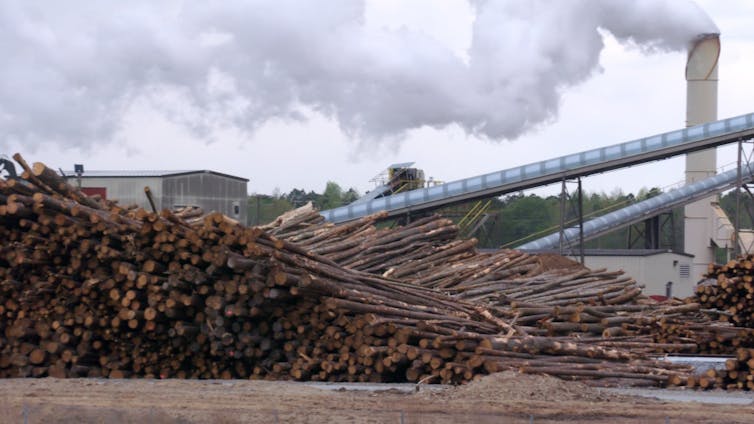
Carbon neutrality supporters
Bioenergy supporters say it’s possible for replacement trees to eventually remove all the carbon emitted through biomass from the atmosphere.
But this would require growing trees and forests that are bigger than the ones already harvested and burned for fuel. In addition to the emissions from combustion, carbon is released from forest soils when trees are felled. And it takes large amounts of energy to prepare wood pellets and transport them to where they are burned.
Some bioenergy advocates claim that the carbon dioxide emitted when utilities and industry burn wood for energy is removed instantaneously by other growing trees located elsewhere. As long as forests globally are removing more carbon dioxide than is being released from harvesting and burning them, they assert that bioenergy is carbon neutral until combustion emissions exceed the removal rate by live trees.
However, there do not appear to be any quantitative studies to support this concept.
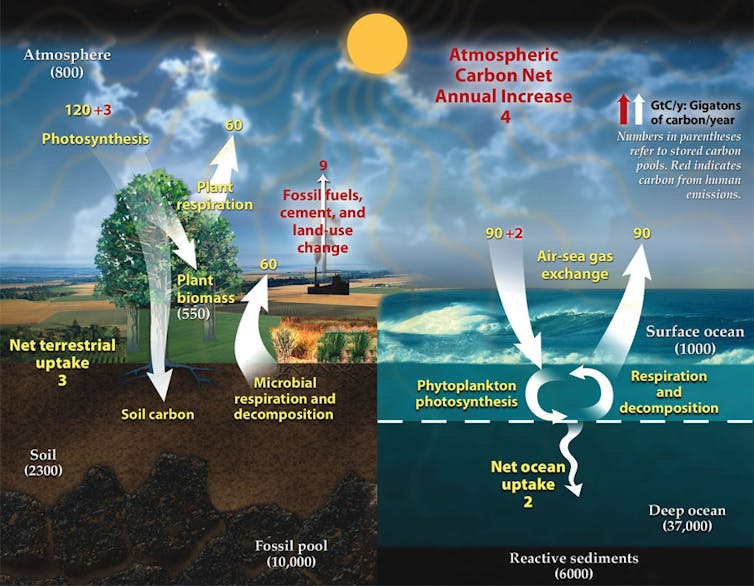
Biomass critics
The scientists and other energy experts who argue that burning wood isn’t carbon-neutral – including me – point out that bioenergy releases as much or more carbon dioxide per unit of thermal energy than coal or natural gas.
People are adding nearly twice as much carbon dioxide as natural systems can remove every year. If forests and soils were not continuously doing their job of removing carbon dioxide from the atmosphere, concentrations would grow annually by 75 percent more than they do.
Like most bioenergy critics, I point out that this debate hinges on the choice of baselines for how and when one measures the net carbon impact of biomass emissions. Put another way, you can’t count trees – and the carbon they would remove – before they grow.
And if the utilities now using biomass were to deploy solar energy instead, more carbon would remain stored in forests and less would be released into the atmosphere.
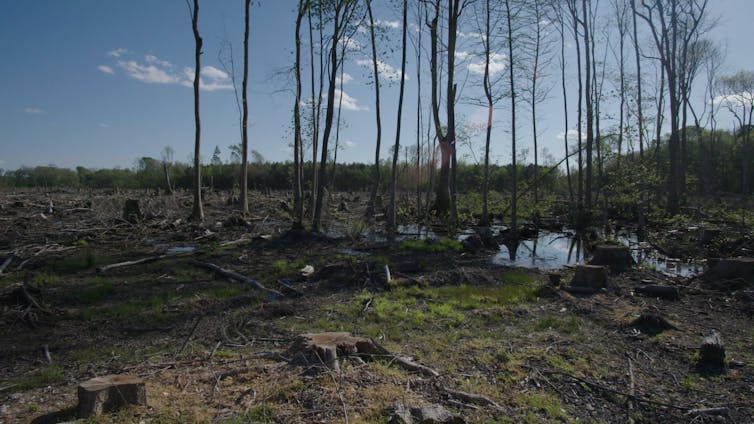
Growing trees takes time
Then there is the issue of time. Wood burns within minutes, releasing carbon dioxide to the atmosphere. But studies have determined that it takes about a century to remove the previously emitted carbon dioxide even if typical forest trees are replaced.
Many bioenergy advocates acknowledge that fact. They argue that a 100-year span is a reasonable time frame for achieving carbon neutrality, but over the following 50 years, some tree species can double in size to store twice as much carbon. Furthermore, according to scientific consensus, the world must begin reducing emissions by 2020 to meet the Paris climate agreement’s goals to stave off disastrous global warming.
But waiting for full-replacement forest growth is a best-case scenario. The forestry industry usually harvests trees for timber, pulp and other products before they grow to their full potential. And there is no assurance that saplings planted to replace trees cut for biomass will grow enough to meet carbon removal goals before being lost to fire, pests, drought or wind – or that the land where they are planted won’t be converted to agriculture, housing, office parks or parking lots.
Even using forest residues from harvesting, and thinnings from forest management aren’t carbon-neutral. Only expanding forests and lengthening times between harvests reduce emissions.
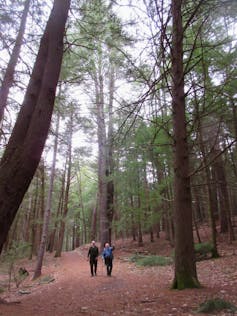
Besides, the consequences of a changed climate, such as flooded coastal cities, irreversibly melted glaciers and sea ice, species extinction and more severe weather events like hurricanes is what really matters – not net carbon emissions. Eventual carbon neutrality does not assure climate neutrality. And even if tree regrowth were to counteract the carbon released through biomass, it would take decades. But the world needs to stall emissions growth now.
And of course if that wood had not been burned, the vast majority of those surviving trees would have removed and stored carbon dioxide emitted from burning coal and other fossil fuels.
Government support
Yet many governments are making forest biomass a mainstay of their renewable energy policies, especially in the European Union – which declared all forms of bioenergy to be carbon-neutral in 2009.
The U.K. is replacing all of its coal-fired power plants with new facilities that burn wood pellets that are largely imported from southern states like North Carolina and Mississippi.
Producing electricity by burning wood now costs more than wind or solar power, making biomass only economically viable with large subsidies. It takes a significant environmental toll on local land, water and biodiversity while generating as much air pollution as coal, or even more, for some pollutants.
The evidence demonstrates that burning biomass worsens climate change. By contrast, protecting and restoring forests increases the removal and long-term storage of carbon from the atmosphere, a highly effective means for slowing global warming.
William Moomaw receives funding from Rockefeller Brothers Fund. He is affiliated with Woods Hole Research Center (Board Chair), The Climate Group (Board Chair North America), The Nature Conservancy. (Board member Massachusetts chapter)
Read These Next
How the ‘slayer rule’ might play a role in determining who will inherit wealth from Rob Reiner and h
These rules have a long history in the United States. They played a role in the notorious murders by…
The celibate, dancing Shakers were once seen as a threat to society – 250 years later, they’re part
‘The Testament of Ann Lee,’ Mona Fastvold’s 2025 film, depicts part of the long history of Shaker…
From truce in the trenches to cocktails at the consulate: How Christmas diplomacy seeks to exploit s
World leaders like to talk up peace at Christmastime. But alongside the tales of seasonal breaks in…






